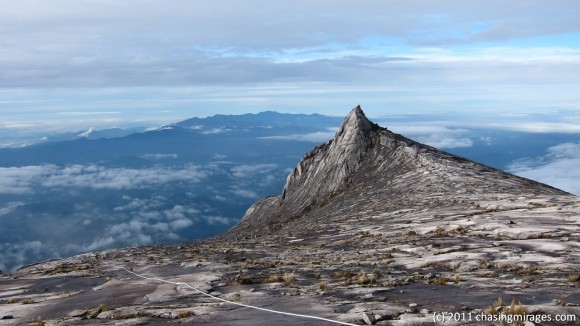Mount Kinabalu, the highest point in Malaysia, is located on Borneo Island, the mystical land of headhunters. Â Unfortunately, we spent only two days there because our time was limited and we also wanted to check out Mulu National Park. Â As a result, I didn’t have a chance to investigate the area’s environmental problems, but I can say that I was happy with the management of the Mount Kinabalu climb.
The permitting system is very strict. Â Only 146 permits are issued each day to prevent overcrowding and limit impact on the park’s environment. Â Hikers are required to spend a night at the hostel at Laban Rata, located several kilometers below the peak, before waking up really early to scramble up the peak in the dark. Â The number of beds at the hostel is also set at 146.
Permits are checked at the entrance to the trail and at a another checkpoint near the peak, and from what I saw, it would have been difficult to sneak past either spot.
Finally, one guide must be hired for every six hikers. Â This is a great way to bring money to the local people, and contributes positively to the safety and educational value of the hike.
The trade-off is that the cost is quite high, but I think it’s well worth the experience, and in the long run these measures are necessary to protect this beautiful place.
As I alluded to in the previous post, I was more impressed by the journey than the view at the top. Â Maybe I’m getting over my lifelong obsession with goals and targets and gradually learning to live in the present, starting to enjoy the weird phenomenon of just being alive.
That said, the area near the peak was also cool. Â For some reason, the texture of the granite reminded me of Michael Bay’s Transformers movies. Â In the picture above, you can see part of the rope that hikers grip in the dark as they struggle up the slippery stone.
